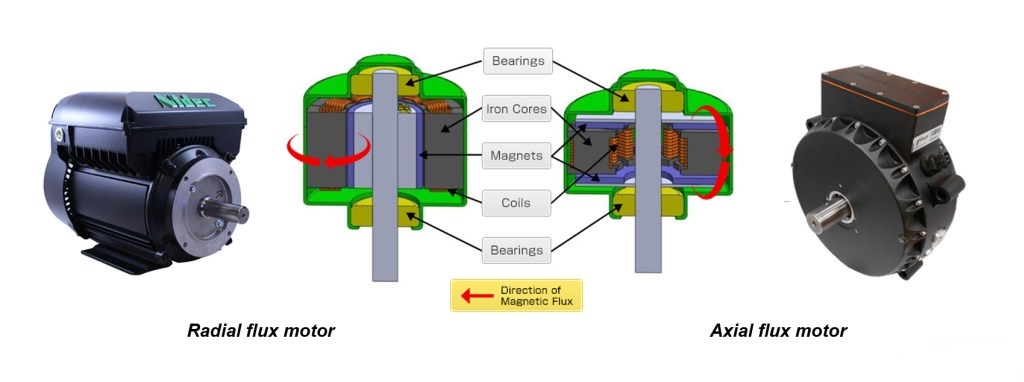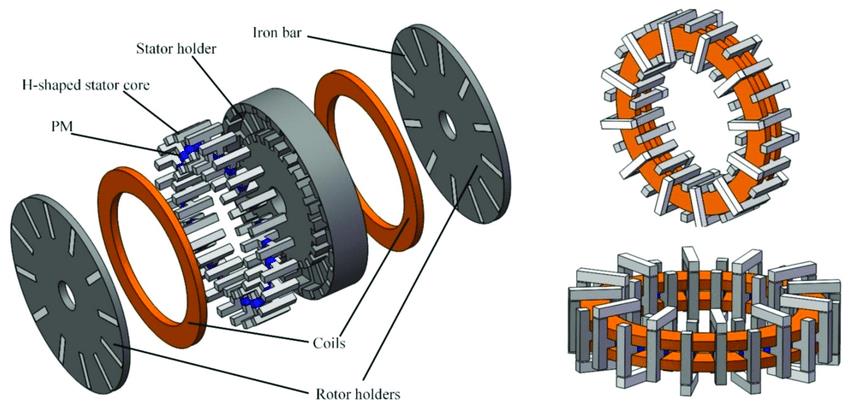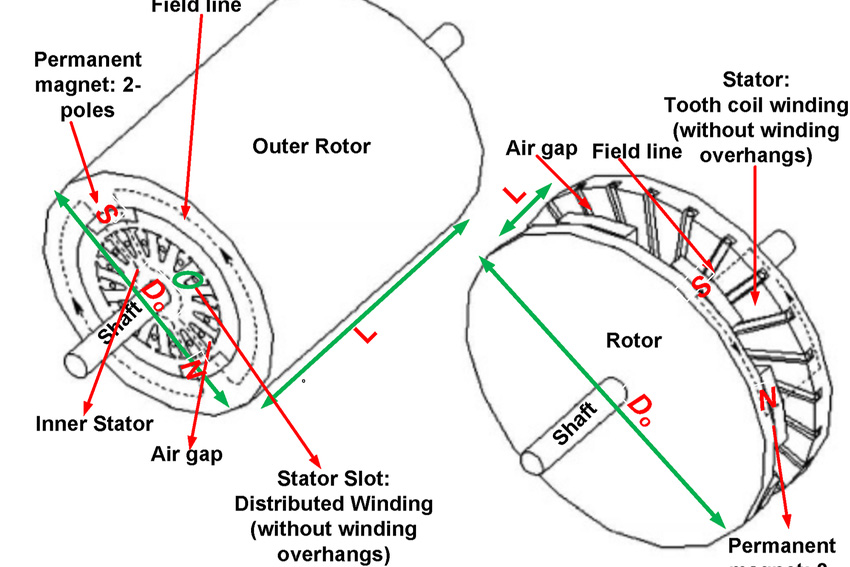An Overview of Axial Flux Motor: Benefits, Types, and Uses
Development of Axial Flux Motor
A motor is a machine that converts the energy of the motor into mechanical energy. Its working principle is based on the electromagnetic interaction of the magnetic field generated by the coil and magnet contained in the structure.
It can be divided into two types: axial flux motor and radial flux motor, according to the direction of the magnetic field. The world's first motor, invented by Michael Faraday in 1821, belongs to the axial flux type. Though the axial flux motor came out earlier, its further development was limited by the material and technological level at that time. Conversely, the radial flux motor which was invented by Davenport in 1834 took the lead in development and became known as the simple motor.

Comparison: Axial Flux motor & Radial Flux Motor
Comparison of Axial and Radial Flux Motor
The air gap of the axial flux motor is planar, and its air gap magnetic field distribution along the axial direction, that is, the air gap magnetic field is perpendicular to the air gap plane. The current development trend of the motor is high speed, low weight, and high efficiency, and the axial flux motor is regarded again under this circumstance.
Two Types of Axial Flux Motor Magnets
a. Axial flux motor magnet with skewed fan shape
For the slotted motor, the cogging torque cannot be avoided due to the interaction between the permanent magnet and the stator tooth, hence leading to torque ripple, vibration, and noise. The cogging torque of the axial flux motor will be suppressed after changing the traditional fan shape axial flux motor magnet into a skewed fan shape.
b. Laminated type axial flux motor magnet
Axial flux motor is also suffering from eddy current losses, and its work efficiency will be also affected by the high-temperature demagnetization. The magnet segmentation technique is an advisable choice to decrease the eddy current losses of axial flux motor magnets. It should be noted that the effects of horizontal segmentation will be much better than vertical segmentation.

Two Types of Axial Flux Motor Magnets
Advantages of Axial Flux Motor
To sum up, the axial flux motor has the following advantages:
· High Power Density: Delivers more power in a compact design.
· Compact and Lightweight: Flat structure saves space and reduces weight.
· Efficiency: Lower energy losses improve performance.
· High Torque: Offers greater torque for its size.
· Better Cooling: Flat design simplifies heat dissipation.
· Design Flexibility: Customizable and versatile for various applications.
Applications of Axial Flux Motor
Based on the above advantages, the axial flux motor is perfect for high torque density and space compact applications. Most people believe that the high power density only depends on high speed, and overlook the influence of torque density. The mere pursuit of high speed will lead the short service time and noise. The core of the high-speed motor is the enhancement of torque density, and axial flux motor is a typical solution among them.
- Electric Vehicles: Compact design and high torque density enhance driving range and performance.
- Aerospace and Drones: Lightweight construction and efficiency are critical for flight systems.
- Wind Turbines: High power density supports renewable energy generation.
- Industrial Automation: Compact size and efficiency improve machinery performance.

Applications of Axial Flux Motor
Conclusion
Thank you for reading our article and we hope it can help you to know more about Axial Flux Motor. If you are interested in strong magnets used in Axial Flux Motor, we would like to recommend you to visit Stanford Magnets for more information.















